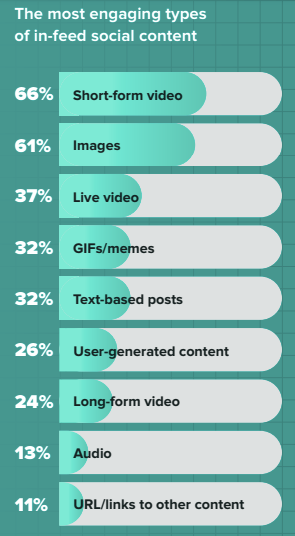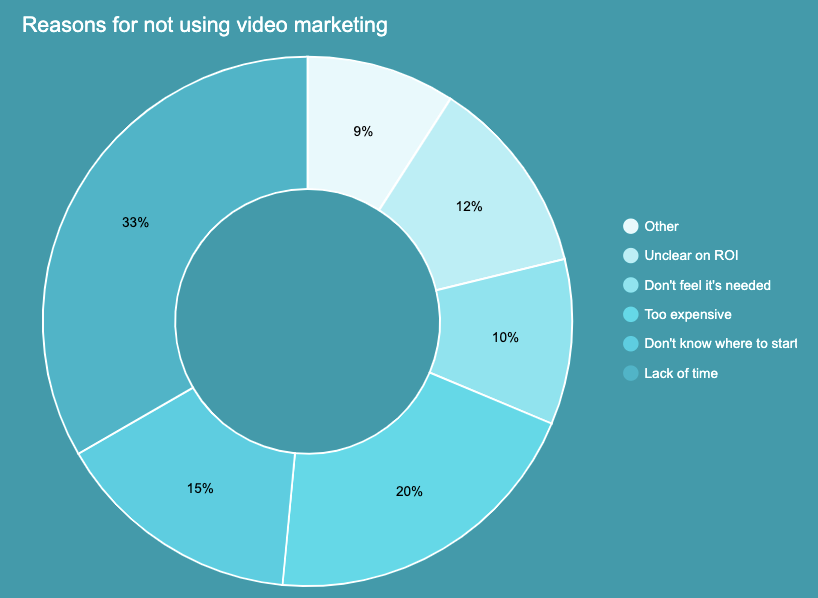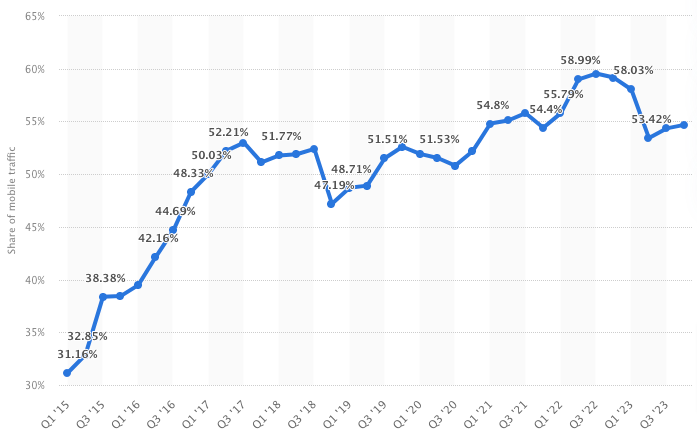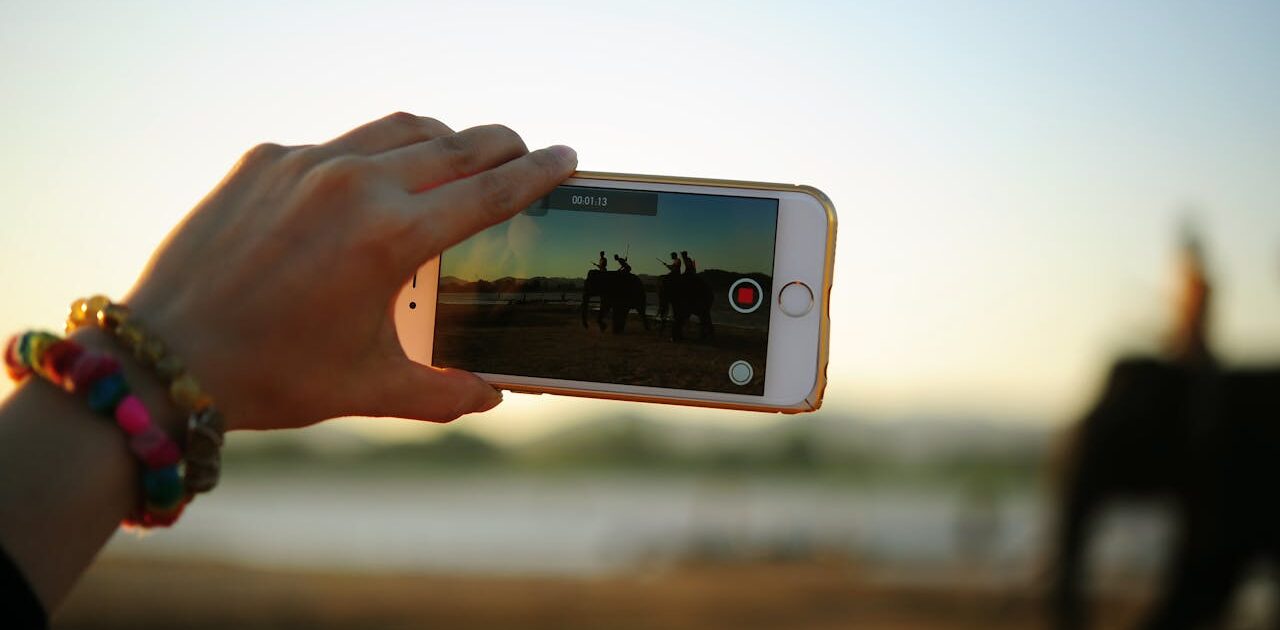Video is no longer optional for marketing teams, with 91% of businesses using it as a marketing tool and 88% describing video as an important part of their marketing strategy. Of those that don’t currently use video, two-thirds plan to start in 2024.
But video isn’t a silver bullet. If you’re going to see success from video marketing, you need to know what works (and what doesn’t) — and the landscape changes fast. To make your life easier, we’ve rounded up ten essential video marketing trends for 2024, covering everything from AI video tools to user-generated content.
Let’s get into it.
1. Continued Popularity of Short-Form Video
Many of us feel that our attention spans are getting shorter.
Whether or not that’s true, it’s essentially self-perpetuating: if we think we have a short attention span, we will naturally favor shorter content. This is playing out in the video marketing world, where short-form content will continue dominating in 2024.
While there’s no hard-and-fast definition of “short-form” or “long-form,” short-form video is generally considered anything from 5 – 90 seconds long.
Consumers say they find this type of video content to be 2.5X more engaging than longer videos, while 66% agree that short-form video is the most engaging of all in-feed social media content formats.

Actions for Marketers
Succeeding in a world dominated by short-form video is about communicating your branding and message as quickly as possible. Nike gets it right in this example:
View this post on Instagram
From the very first shot, viewers see the Nike branding alongside Megan Thee Stallion’s name and the title of their collaboration, Hot Girl Systems.
Even if you stop watching after a couple of seconds, there’s still a chance you’ll retain some (or maybe even all) of that information.
2. AI Tools To Ease Video Creation Process
Among businesses that don’t currently “do” video marketing, 33% say they’re being held back by a lack of time, 20% think video is too expensive, and 15% simply don’t know where to start.

These are issues that marketers can mitigate or entirely overcome through AI-powered video technology.
No wonder that “content creation” continues to be the #1 use case for AI in marketing.
Actions for Marketers
If you’re new to AI video tech, now’s the time to familiarize yourself with tools to streamline the video content creation process. Examples include:
- Synthesia: This platform lets you turn text into studio-quality video content in minutes using AI voiceovers and avatars. It’s capable of creating videos in over 130 languages.
- VEED.IO: Another text-to-video tool that uses AI to generate video content fast, complete with voiceovers, captions, music, and animations.
- Lumen5: Described as the “PowerPoint of video making,” Lumen5 features a point-and-click video creator and can transform blog posts and Zoom recordings into video clips.
3. Shift Toward Vertical Video
Over the past five years, mobile devices have accounted for more than half of global internet traffic, peaking at almost three-fifths of traffic in mid-2022.

For video marketers, the upshot is a continued shift away from landscape videos, which simply don’t play nice within social media apps when viewed on mobile.
Even YouTube, which still has a standard aspect ratio of 16:9 (i.e., landscape), now generates the lion’s share of its traffic from mobile. So it’s no surprise the world’s most-watched video platform has begun shifting toward portrait-oriented videos — not least through the launch of YouTube Shorts, its answer to TikTok and Instagram Reels.
Actions for Marketers
This is a simple one: if you aren’t already prioritizing vertical video, now’s the time to start. We expect the 9:16 aspect ratio to dominate in 2024.
4. Growth of Video in Email Marketing
Email is one of the most cost-effective marketing channels.
You can engage a user via social media, persuade them to sign up for your email list, and then reach out to them in their email inbox — one of the few places on the internet that isn’t governed by an algorithm.
Up until now, video and email haven’t exactly been natural bedfellows. Quite the opposite: major email clients like Gmail and Outlook often don’t allow users to play video content within an email.
Despite this, including videos in emails has been shown to boost click-through rates by 65%, while Superoffice found that simply adding the word “video” to email subject lines increased its open rates by 6%.
So we’re definitely expecting to see more crossover between video and email in 2024.
Actions for Marketers
Due to the technical limitations of some email clients, you need to get smart about using video in email.
One of the best (and simplest) tactics is to include a static image with a “play” button in your email, just like this example from Warner Bros. Games:

Then, you can link to the actual video on YouTube or a dedicated landing page. Easy!
5. More CGI Effects in Social Media Videos
Only a few years ago, social media video content was still something of a novelty.
Today, our social feeds are packed full of videos, which means they no longer have the same built-in “wow” factor. So brands are forced to push the boundaries with ever more outlandish lenses, filters, and other effects.
This Maybelline mascara campaign is an eye-catching example:
Actions for Marketers
Sure, most of us don’t have access to the same marketing budget as Maybelline. But we can still get creative by playing around with the built-in augmented reality features and special effects on TikTok and Instagram Reels.
6. Fewer Influencers, More User-Generated Content
Influencer videos have been a mainstay of social media marketing strategies for years.
But there are plenty of signs that audiences are craving more authentic voices. Indeed, 81% of consumers say that influencer partnerships either have no impact or have a negative impact on how they perceive a brand — while 51% simply scroll straight past influencer posts.
For that reason, in 2024, we’re expecting more and more marketers to move away from influencer collaborations and toward user-generated video content, like this example from Michigan State University:
View this post on Instagram
Actions for Marketers
Are you struggling to capture enough user-generated content to meet your marketing needs? Try offering an incentive (like a gift card or a product discount) to encourage people to share video content with you.
Don’t think of it as a bribe — think of it as a simple “thank you” for their hard work.
7. Turning Employees into Brand Advocates
Another way to get more “real people” (and fewer influencers) into your video content is through employee advocacy — encouraging people who work at your organization to contribute to your marketing strategies.
Employee advocacy programs offer significant benefits to brands, with one study revealing they can increase total social media engagement by 25% – 40%.
It’s not hard to see why: when your employees are prepared to speak publicly (and positively) about your organization, it makes your brand look more attractive, credible, and trustworthy.
Which, in turn, means people are more likely to engage with your content.
We’re expecting to see more employees appearing in marketing videos in 2024.
Actions for Marketers
To be clear, employee advocacy doesn’t (necessarily) involve a bunch of people saying how much they love their jobs. That can feel pretty forced. Instead, showcase your team members through day-in-the-life videos, like this example from South Metro Fire Rescue:
That way, you allow their enthusiasm to shine through naturally.
8. More Brands To Leverage Live Video
Live video streaming isn’t a new trend.
Social media features like Instagram Live have existed for almost a decade (where does the time go?). Yet marketers have been surprisingly slow to get on board, with just 36% saying they’ve published live video content on social media channels.
However, the upsides are significant. One in four US livestream attendees have bought products during a live shopping show, while 34% went on to buy the featured product post-event.
Given those impression conversion rates, we’re going to stick our necks out and say that 2024 will be the year live video finally goes mainstream.
Actions for Marketers
A lot of stuff can go wrong during a live video stream, so your best bet is to keep things simple.
Not all topics are a good fit for live video. It’s a perfect platform for showcasing a new, physical product — but we wouldn’t recommend it for anything that requires a lot of explanation, like communicating the rules of a competition.
9. Simpler, Cheaper Video Production
Once upon a time, creating video content meant hiring a whole production team and expensive equipment. But today, smartphones are so advanced that you don’t need a fancy video camera.
This isn’t just true for tiny marketing teams with small budgets; even huge, global organizations are ditching the high-end tech in favor of the devices in their pockets. For instance, the official video for Olivia Rodrigo’s Get Him Back was shot entirely on the iPhone 15 Pro:
Actions for Marketers
Don’t just ditch the costly cameras — say “no” to expensive video software by editing footage on your phone using apps like iMovie and LumaFusion.
10. Silence (in Videos) is Golden
The ever-increasing availability of 5G mobile data speeds means more of us are watching video content on our mobile devices while out of the house — on the bus, at the hairdresser, in a cafe.
Fortunately, most people don’t watch those videos with the volume cranked up to maximum. Quite the opposite: 92% of consumers now watch videos on mute.
All of this means the most effective videos in 2024 will be able to convey their message even with the sound switched off.
Actions for Marketers
There’s an obvious solution here: always add captions to your videos.
Not only does this ensure that viewers will understand what’s going on even if they’re watching on mute, but it also makes your content more accessible to people who are deaf or hard of hearing.
As a bonus, captions can also make your messaging more memorable, even to people who watched with the sound on. What’s not to like?
Want to know how top brands plan to stay at the top of the social media marketing game in 2024? Sign up for one of our upcoming social media conferences.
Featured image by Pexels.









